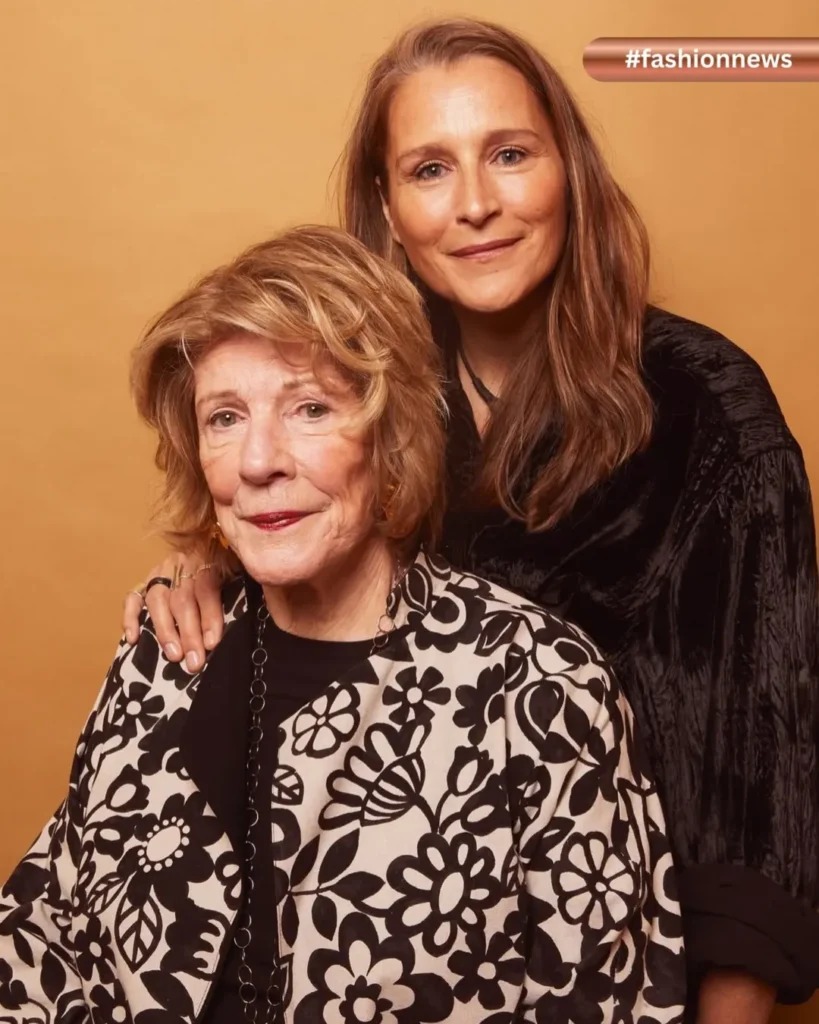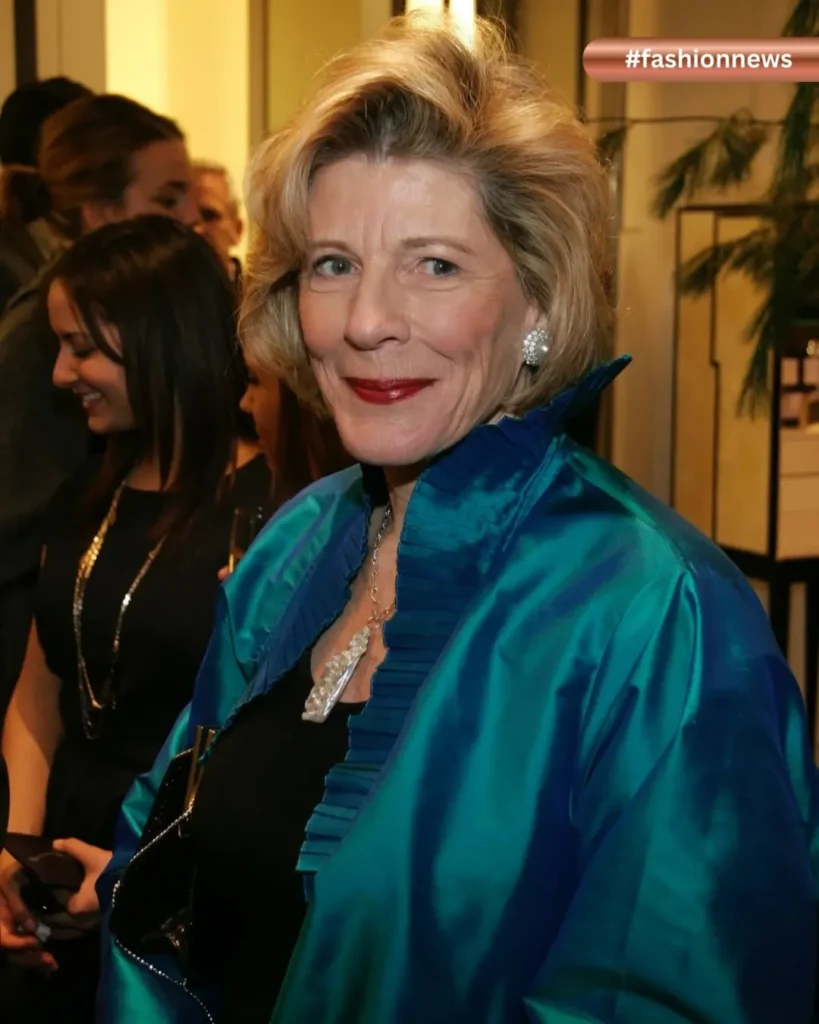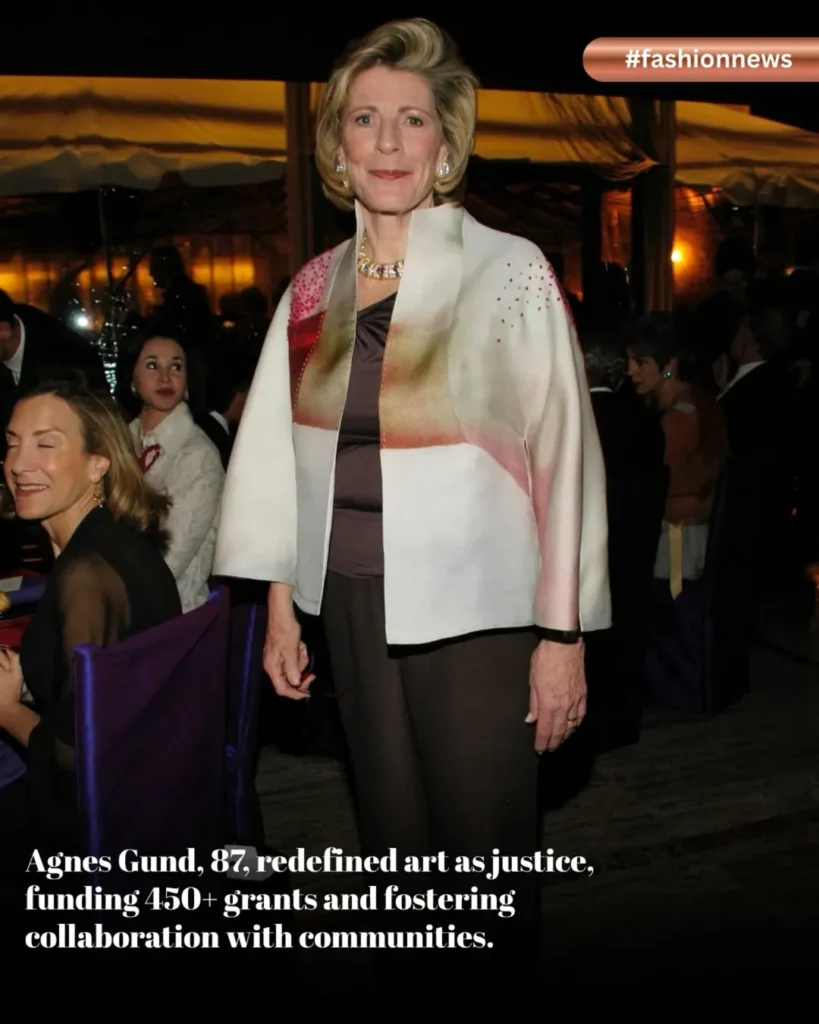Agnes Gund died on September 18, 2025, in New York at age 87. With her passing the world loses not only a collector and arts patron, but someone who believed deeply in art as a force for social good. Her life bridged museum walls and street corners, gallery halls and classrooms, power and vulnerability. She showed that beauty and justice need not be separate—often, they are inseparable.
Early Roots, Quiet Convictions
Born in Cleveland, Ohio in 1938, Agnes Gund grew up in privilege—but not apathy. Her father, George Gund II, was a banker; her mother, Jessica Roesler, instilled in her a love for culture. Early exposure to museums, art history, sketching and visiting galleries shaped her worldview: art was not only to be seen, but to be understood, shared, lived.
She studied history at Connecticut College, later earning a master’s degree in art history. Those academic years deepened not just her knowledge of form and color, but her sense of art’s place in society. She came of age believing that education—especially in the arts—was essential to empathy, that exposure mattered, that access should not depend on zip code.
Institutions, Influence, and Expanding Imaginations

Agnes joined the international council of MoMA in 1967, and its board in 1976. She went on to become president of the museum from 1991 to 2002, and later served as President Emerita and Life Trustee. During her tenure, she supported MoMA’s expansion, helped launch MoMA PS1 as a vibrant place for contemporary art, and championed the inclusion of artists who until then had been marginalized—women, artists of color, voices outside the traditional canon.
Beyond MoMA, she contributed to institutions including the Cleveland Museum of Art, the Morgan Library & Museum, and others, donating works, lending pieces, helping build collections, all with an eye toward public access. Her collecting practice was thoughtful, not ostentatious. She often donated major works so that museums could enrich their public offerings, making visible what too often remains private.
Masterpiece and the Art for Justice Fund
Perhaps her most widely known act of radical generosity came in 2017. She sold Roy Lichtenstein’s Masterpiece (1962) for $165 million, and committed roughly $100 million of that toward creating the Art for Justice Fund—a project aimed at reforming the criminal justice system, addressing mass incarceration, and supporting artists and organizations working to change narratives and policy.
Over its lifespan, the Fund awarded hundreds of grants to groups tackling the effects of incarceration, racial inequities, and reentry into society. It wasn’t just about giving money—it was about giving voice, visibility, and possibility to people often ignored. Gund understood that art can heal, provoke, educate, and catalyze policy. She deployed her resources with moral intention.
Studio in a School: Cultivating Young Eyes
Long before her more famous moves, in 1977 she founded Studio in a School. When arts education suffered budget cuts in New York public schools, she insisted that children deserve access to art—access to tools, teachers, and voices. This nonprofit engaged working artists to bring art into classrooms and communities, helping young students see their own creativity as valid, relevant.
Her educational efforts weren’t flashy. They simply worked. Thousands of students over decades were given the chance to draw, paint, imagine, make mistakes, and have their vision valued. That kind of foundational work is often overlooked, but in Gund’s hands it was integral.
Values in Action: Collaboration Over Hierarchy

What distinguished her among many patrons was that she rarely embraced hierarchy. She listened. She fostered collaboration among artists, activists, institutions. She believed those most directly affected by injustice should guide solutions. Through Art for Justice and her institutional work, she supported leadership from communities confronting incarceration and inequity.
Her activism was personal too. She didn’t see philanthropy as external to self, but as part of how she lived. She often spoke about responsibility—what it meant to have resources, to witness suffering, to use what one has not just to collect, but to give, to change. She partnered closely with her daughter Catherine Gund, and others, weaving family, values, and action.
The Legacy That Will Remain
Agnes Gund’s death leaves a void—one in museum boardrooms, classroom studios, criminal justice reform corridors. But her legacy is also firm, and already embedded.
She leaves behind:
- A transformed MoMA that is more inclusive and ambitious in scope
- A collection of artworks given to public institutions so that people everywhere might see and be moved by them
- Programs and nonprofits that will continue beyond her life, thanks to her planning, her funding, her fierce insistence on durability
- A model of what it means to be a patron: not someone who quietly collects prestige, but someone who spends energy, time, risk, and art to reflect society’s possibility
Agnes Gund once said that art isn’t luxury. She believed art could be empathy in pigment, equity in institution, change in canvas. She lived that out, often quietly, sometimes with headlines, always with moral seriousness.
Her passing is a moment to remember not just the paintings, galleries, and grants—but the heart behind them. To honor her is to continue believing in art’s power to name injustice, to offer beauty, to create connection, and to imagine a better world.
She transformed the way many of us see art—not as something to admire from afar but as something that can be lived, as something that must matter. And for that, her life will continue to resonate.

